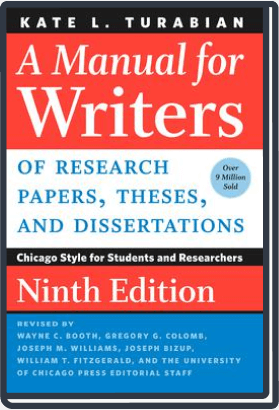BibGuru Turabian Citation Generator
Cite websites, books, articles, ...

Stress-free and accurate citations with the BibGuru Turabian citation generator
| 🚀 Fast | 👌 Simple and intuitive interface |
| 🎓 Cite in Turabian & many other styles | 🥇 Most accurate citation data |
Getting citations and reference lists done correctly can be very confusing and time-consuming. That's why we developed BibGuru—to let you concentrate on your writing instead of stressing over how to format your references properly. We believe students shouldn't have to spend hours manually entering information or risk losing points due to citation errors.
BibGuru is a quick and easy-to-use Turabian citation generator built with students in mind. Its efficient search tool lets you find books, websites, and journal articles and instantly add them to your bibliography. Start citing now:

I want to cite a ...
What is the Turabian citation style?
The Turabian Manual for Writers of Research Papers, Theses, and Dissertations is a style guide for writing and formatting papers published by the University of Chicago Press. The citation style is named after Kate L. Turabian, an American educator who developed this style. In 2018, the ninth edition of the Turabian style was published.
Except for a few minor differences, the citation style is the same as the Chicago style (published in the 17th edition of the Chicago Manual of Style). The main difference is that while the Chicago Manual of Style focuses primarily on providing guidelines for publishing, the Turabian Manual for Writers of Research Papers, Theses and Dissertations mainly focuses on the creation and submission of academic work. Therefore, the University of Chicago Press describes it as "the gold standard for college and graduate students in virtually all academic areas".
How does the Turabian citation style work?
Just like the Chicago style, the Turabian style comes in two varieties:
- Author-date: Often used in the sciences (physical, natural) and social sciences. Sources are briefly cited in the text (usually in parentheses, author's last name and year of publication), and matched up with an entry in a reference list with full bibliographic information.
- Notes and bibliography: Preferred by many working in the humanities (literature, history, the arts,..). Sources are cited in numbered footnotes or endnotes in the text and listed in a separate bibliography.
An example of a citation in the notes and bibliography system:
Footnote:
David Halliday, Robert Resnick, and Jearl Walker, Fundamentals of Physics (Hoboken, NJ: Wiley, 2013), 18.
Bibliography:
Halliday, David, Robert Resnick, and Jearl Walker. Fundamentals of Physics. Hoboken, NJ: Wiley, 2013.
The two styles are very similar, aside from the way they cite sources in the text. If you're not sure which style to use, ask your instructor.
While all the specific rules of the Turabian citation style might be complicated, you don't need to worry about getting them wrong with BibGuru. Use our Turabian citation generator above to create the fastest and most accurate Turabian citations possible.
FAQs
🧾 What type of citation format does Turabian use?
The Turabian style is a simplified version of the Chicago citation style. Just like the Chicago citation style, Turabian comes in two variations: note and bibliography and author-date.
🤖 Who invented the Turabian style?
Turabian style was developed by Kate L. Turabian, an American educator, and the style is based on the citation guidelines of the Chicago format. Therefore, the official inventors of the Turabian style are Kate L. Turabian, and the University of Chicago Press.
👨🏻🤝👨🏽 What are the differences between Chicago and Turabian style?
The Turabian citation style is the same as the Chicago style except for a few minor differences published in the 17th edition of the Chicago Manual of Style. The main difference is that while the Chicago Manual of Style focuses primarily on providing guidelines for publishing, the Turabian Manual for Writers of Research Papers, Theses and Dissertations mainly focuses on the creation and submission of academic work. Therefore, the University of Chicago Press describes it as "the gold standard for college and graduate students in virtually all academic areas".
🤯 Are the Turabian citation rules complicated?
While all the specific rules of the Turabian citation style might be complicated, you don't need to worry about getting them wrong with BibGuru. Use our Turabian citation generator above to create the fastest and most accurate Turabian citations possible.
🔁 Should I use Chicago style instead of Turabian?
Before taking the decision on whether to use Chicago or Turabian style, take a look at both guidelines. Having said that, the Turabian style is a simplified version of the Chicago citation style, so you be the judge.